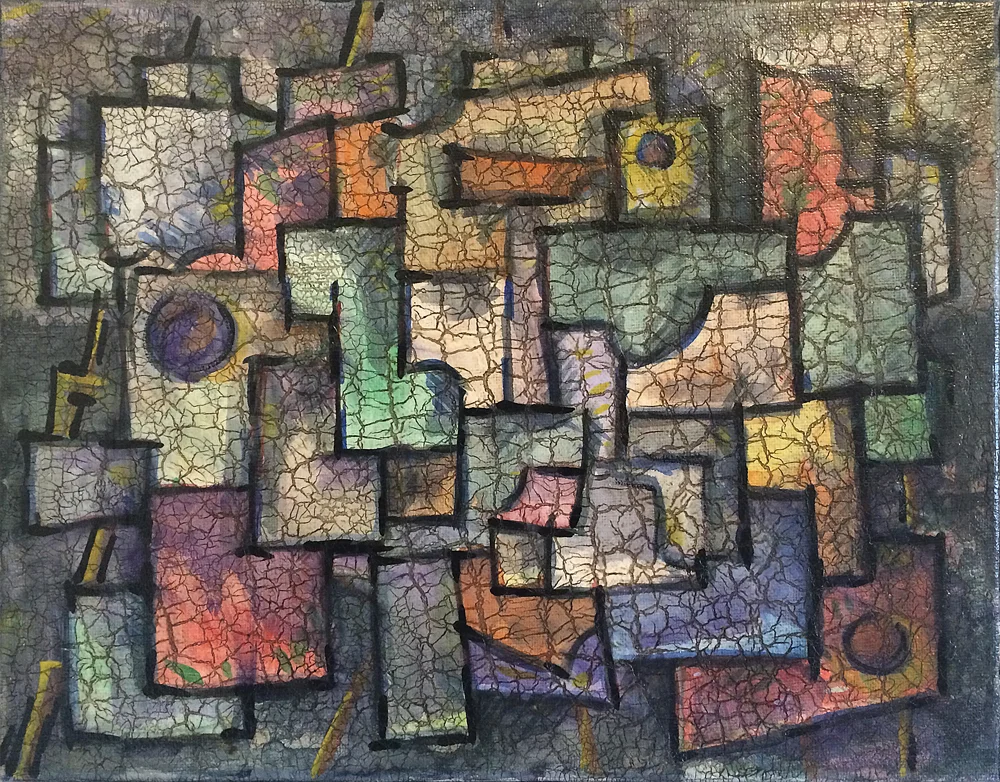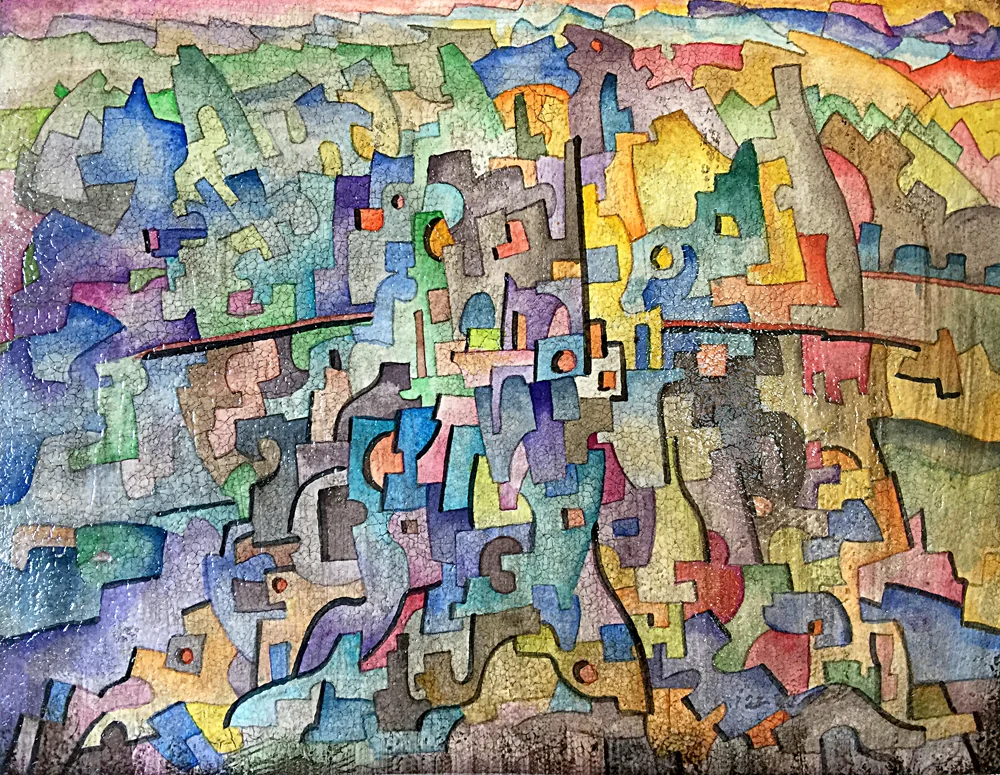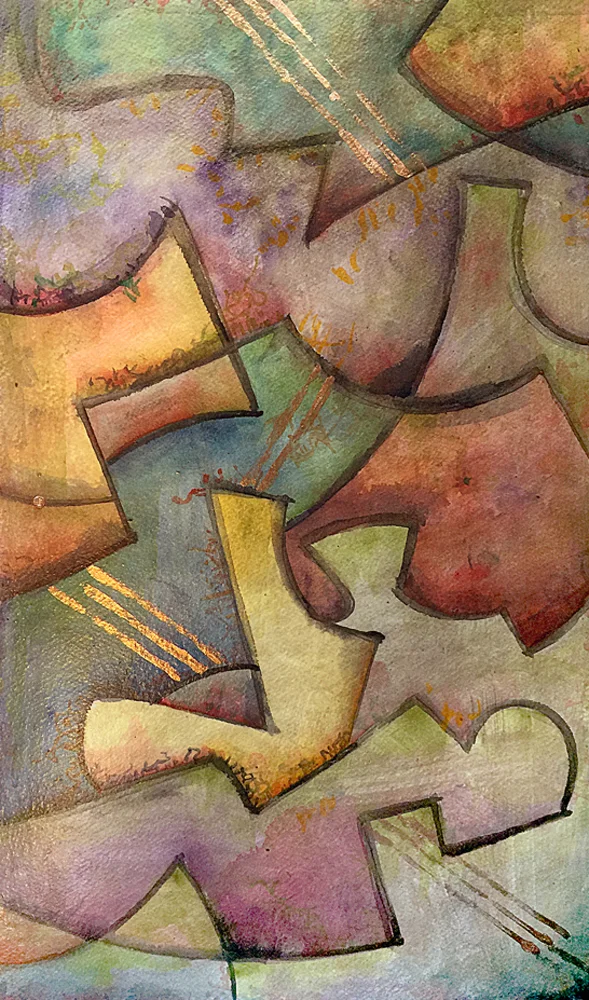The Blavatsky series
Several of early non-objective art's pioneers – among them Kazimir Malevich, Piet Mondrian, Wassily Kandinsky and Hilma af Klint – explored the occult, and were drawn in particular to the teachings of Helena Blavatsky (1831-1891), the co-founder of the Theosophical Society in 1875.
In this ongoing series of paintings I've tried to extrapolate how some of western art's next generation of European abstract painters might have responded to issues associated with the Theosophist and Anthroposophist movements during the first decades of the 20th century. For years I've been fascinated by the art of the "Tachistes" – a large, loosely associated group of post-World War II painters, mostly Paris-based, who worked mainly during the 1940s, '50s and '60s. Also known as "lyrical abstract" painters, they include Maria Elena Vieira da Silva (1908-1992), Gérard Schneider (1896-1986), Serge Poliakoff (1906-1969), Wols (1913-1951), Jean-Paul Riopelle (1923-2002), Georges Mathieu (1921-1912), Hans Hartung (1904-1989), Jean Dubuffet (1901-1985), Zao Wou-Ki (1920-2013), André Lanskoy (1902-1976), Jean Bazaine (1904-2001), Olivier Debré (1920-1999), Pierre Tal-Coat (1905-1985), among many others – an entire generation of earnest non-representational painters whose work today, though fetching high prices among collectors, has been largely excluded from the surveys of modernism because their work came just a little too late. (The two exceptions to this sad fact – Nicolas de Stäel (1914-1955) and Pierre Soulages (bn. 1919) – contributed innovations of sufficiently identifiable kind to ensure their lasting fame.)






































